We use information collected through cookies and similar technologies to improve your experience on our site, analyze how you use it and for marketing purposes.
Your privacy settings
We and our partners use information collected through cookies and similar technologies to improve your experience on our site, analyze how you use it and for marketing purposes. Because we respect your right to privacy, you can choose not to allow some types of cookies. However, blocking some types of cookies may impact your experience of the site and the services we are able to offer. In some cases, data obtained from cookies is shared with third parties for analytics or marketing reasons. You can exercise your right to opt-out of that sharing at any time by disabling cookies.
Manage Consent Preferences
Necessary
Always ON
These cookies and scripts are necessary for the website to function and cannot be switched off. They are usually only set in response to actions made by you which amount to a request for services, such as setting your privacy preferences, logging in or filling in forms. You can set your browser to block oralert you about these cookies, but some parts of the site will not then work. These cookies do not store any personally identifiable information.
Analytics
These cookies and scripts allow us to count visits and traffic sources, so we can measure and improve the performance of our site. They help us know which pages are the most and least popular and see how visitors move around the site. All information these cookies collect is aggregated and therefore anonymous. If you do not allow these cookies and scripts, we will not know when you have visited our site.
Embedded Videos
These cookies and scripts may be set through our site by external video hosting services likeYouTube or Vimeo. They may be used to deliver video content on our website. It's possible for the video provider to build a profile of your interests and show you relevant adverts on this or other websites. They do not directly store personal information, but are based on uniquely identifying your browser and internet device. If you do not allow these cookies or scripts it is possible that embedded video will not function as expected.
Google Fonts
Google Fonts is a font embedding service library. Google Fonts are stored on Google's CDN. The Google Fonts API is designed to limit the collection, storage, and use of end-user data to only what is needed to serve fonts efficiently. Use of Google Fonts API is unauthenticated. No cookies are sent by website visitors to the Google Fonts API. Requests to the Google Fonts API are made to resource-specific domains, such as fonts.googleapis.com or fonts.gstatic.com. This means your font requests are separate from and don't contain any credentials you send to google.com while using other Google services that are authenticated, such as Gmail.
Marketing
These cookies and scripts may be set through our site by our advertising partners. They may be used by those companies to build a profile of your interests and show you relevant adverts on other sites. They do not store directly personal information, but are based on uniquely identifying your browser and internet device. If you do not allow these cookies and scripts, you will experience less targeted advertising.
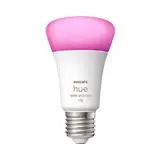
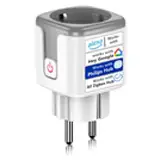
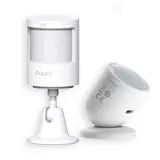
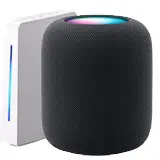
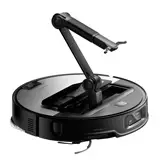

Voice-controlled lighting: Compatible with Alexa, Google, and Siri
Imagine walking in the door after a long day. You don't reach for the light switch. You just say: "Alexa, turn on the living room lights." And, poof! The lighting adjusts to you. Controlling your lights with your voice is easier than you think. And it's a reality you can enjoy today.
Smart Lighting at Your Fingertips: Alexa, Google Assistant, and Siri
Voice-controlled lighting has transformed how we interact with our homes. Gone are the days of fumbling for the light switch in the dark. Now, with a simple command, you can adjust the lighting to your liking, creating perfect atmospheres for every occasion. The key to this convenience lies in compatibility with the major voice assistants: Alexa, Google Assistant, and Siri. Each offers an intuitive and easy way to integrate smart lighting into your daily life.
What do you need to control the lighting with your voice?
The good news is that starting to control your lighting with your voice is pretty straightforward. You don't need to be a tech expert. Here are the essential components:
How does voice-controlled lighting work?
The process is surprisingly simple:
Voice Commands for Lighting Control
Once you've got everything set up, the fun begins! Here are some example commands you can use:
Alexa Commands
Commands for Google Assistant
Siri Commands
Here are just a few examples. Explore the possibilities with your voice assistant and see how you can customize your lighting experience. Experiment with different commands and discover the perfect combination for each situation.
Benefits of Voice-Controlled Lighting
Beyond convenience, controlling lighting with voice offers a number of significant advantages:
Lighting control for people with reduced mobility
Accessibility is one of the most important advantages of this technology. For people with reduced mobility, being able to control the lighting with their voice can make a big difference in their quality of life. They no longer need to rely on others to turn the lights on or off. This independence is invaluable and contributes to greater autonomy.
Smart Bulb Brands and Voice Assistants
The smart lighting market is constantly growing, with a wide variety of brands and products available. Here are some of the most popular options:
Smart Bulb Brands
Voice Assistants
Consider your needs and budget when choosing light bulbs and a voice assistant. Research and compare the different options to find the perfect match for your home.
Tips and Best Practices for Voice-Controlled Lighting
To get the most out of voice-controlled lighting, keep these tips and best practices in mind:
Protect your privacy.
It's important to be privacy-conscious when using smart devices. Review the privacy policies of manufacturers of smart light bulbs and voice assistants. Adjust the privacy settings to your preferences. Consider disabling the voice assistant's microphone when you're not using it. Protecting your privacy is crucial when adopting new technologies.
Integration with Other Smart Devices
Voice-controlled lighting becomes even more powerful when integrated with other smart devices in your home. For example, you can create routines that automatically turn on the lights when motion is detected or when the front door opens. You can also integrate the lighting with your entertainment system to create an immersive experience when watching movies or playing video games.
Examples of Integration:
Common Problem Solving
"While voice control of lighting is generally reliable, sometimes issues can arise. Here are some solutions to common problems:"
If you're still having trouble, check the manufacturer's documentation or look for help on online forums and communities.
The Future of Voice-Controlled Lighting
The future of voice-controlled lighting is bright. As technology advances, we can expect new and innovative ways to interact with the lighting in our homes. Some trends we can expect include:
Smart lighting will continue to evolve and transform how we live and work.
Conclusion
Controlling your lighting with your voice is a simple and effective way to make your home smarter, more comfortable, and safer. With compatibility with Alexa, Google Assistant, and Siri, smart lighting is accessible to everyone. From the convenience of controlling lights without lifting a finger to energy savings and improved security, the benefits are undeniable. Don't wait any longer to transform your home. Start controlling your lighting with your voice today. Share this article with your friends and family so they can also enjoy this amazing technology!
Related Posts
Smart switches: are they worth switching to?
Can you imagine controlling the lights in your house with your phone? Or having them turn on by themselves at dusk? Sounds like a science fiction movie, doesn't it? Well, it's not. They're smart switches, and they're changing the way we interact with our homes. But is it really worth it to replace traditional switches with these modern devices? ...
Smart outdoor lighting: safe and efficient options
Smart outdoor lighting has transformed the way we think about the safety, energy efficiency and aesthetics of our outdoor spaces. It's no longer just about having a light that comes on when it gets dark. Now, we're talking about connected systems that adapt to our needs, improve safety and ...
How to choose smart bulbs? Wi-Fi, Zigbee, or Bluetooth?
Can you imagine controlling your home's lights with your phone? Scheduling them to turn on automatically at sunset? Smart bulbs do all this and more. But how do you choose the perfect smart bulb for you? Don't worry! We'll guide you through the options: Wi-Fi, Zigbee, and Bluetooth. Smart Bulbs: Wi-Fi, Zigbee, and…
Lighting automation: create atmospheres with a single click
Imagine coming home after a long day. With a simple click on your phone, the light dims to a warm and inviting level, soft music starts to play, and the blinds lower automatically. Everything is perfectly orchestrated to create the ideal atmosphere to relax. This, and much more, is possible…